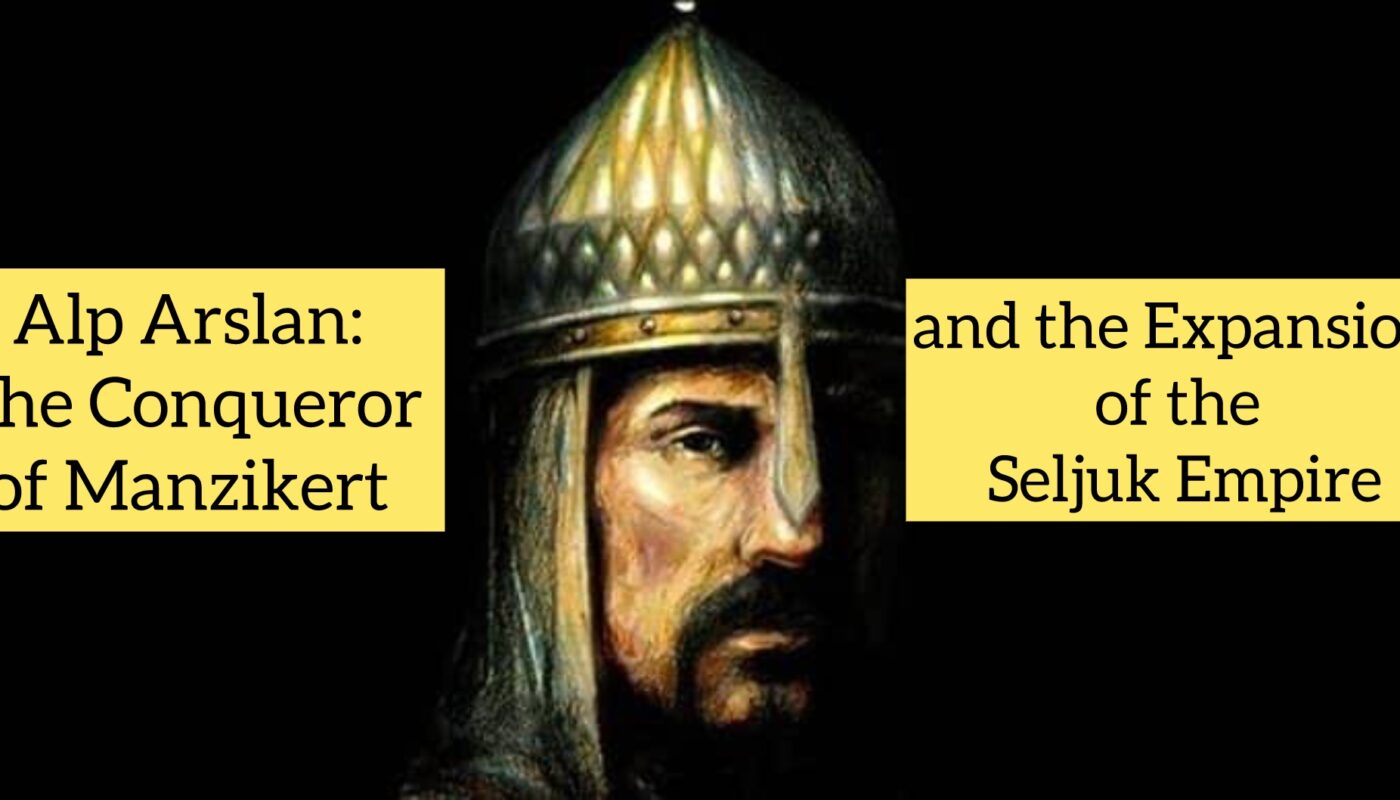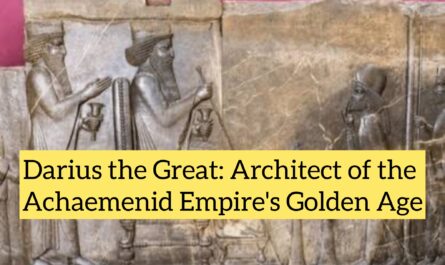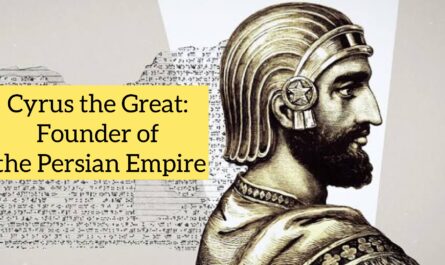Introduction
Alp Arslan (1029–1072 CE), whose name means “Heroic Lion” in Turkish, was the second sultan of the Seljuk Empire and a central figure in the transformation of the Islamic world in the 11th century. He is best remembered for his decisive victory at the Battle of Manzikert (1071), which opened the gates of Anatolia to Turkish settlement, altering the demographic and political landscape of the Middle East and Eastern Europe for centuries.
Alp Arslan not only expanded the Seljuk territories but also laid the groundwork for future Islamic dominance in Anatolia, eventually leading to the rise of the Ottoman Empire.
Early Life and Background
-
Full name: Muḥammad bin Dawud Chaghri
-
Born: 1029 CE, in Khurasan (modern-day Iran)
-
Father: Chaghri Beg, co-founder of the Seljuk dynasty
-
Dynasty: Seljuk (a branch of the Oghuz Turks)
Alp Arslan was trained from a young age in warfare, governance, and Islamic principles. He gained significant military and administrative experience under his father and uncle, Tughril Beg, the first Seljuk sultan.
Rise to Power
Succession after Tughril Beg
-
In 1063 CE, after Tughril Beg’s death without an heir, Alp Arslan succeeded him as the sultan of the Seljuk Empire.
-
His rise was not without challenge—he had to overcome rivals like Qutalmish, another claimant to the throne.
-
With the support of his vizier Nizam al-Mulk, Alp Arslan quickly consolidated power.
Reign of Alp Arslan (1063–1072)
1. Internal Consolidation
-
Reorganized the Seljuk military and administration
-
Strengthened central authority and enforced Islamic law (Sharia)
-
Appointed loyal Turkish emirs and Persian bureaucrats to stabilize the empire
2. Expansion of the Empire
Alp Arslan significantly expanded Seljuk territories:
-
Conquered Armenia, Georgia, and parts of Azerbaijan
-
Conducted successful campaigns against the Byzantine Empire
-
Integrated various Turkic tribes into his military system, further boosting his power
3. The Vizier: Nizam al-Mulk
-
Alp Arslan’s rule was supported by the genius of Nizam al-Mulk, his Persian vizier
-
Nizam established the Nizamiyya schools, some of the earliest Islamic universities
-
He created a centralized bureaucratic structure based on Persian administrative traditions
The Battle of Manzikert (1071): A Turning Point in History
Background
-
The Byzantine Empire, under Emperor Romanos IV Diogenes, launched a campaign to reclaim eastern Anatolia from Seljuk incursions.
-
Alp Arslan, who had been campaigning in Central Asia, redirected his forces west to confront the Byzantines.
The Battle
-
Date: August 26, 1071
-
Location: Near the town of Manzikert (in present-day Turkey)
Despite being outnumbered, Alp Arslan’s forces defeated the Byzantine army in a stunning victory.
Capture of the Emperor
-
Romanos IV was captured alive and brought before Alp Arslan.
-
The sultan treated him with unexpected magnanimity, reportedly saying:
“What would you do if I were brought before you as a prisoner?”
-
Romanos replied, “Perhaps kill you,” to which Alp Arslan famously responded:
“My punishment is far heavier than that—I forgive you and set you free.”
He later ransomed the emperor and used the victory to consolidate control over Anatolia.
Aftermath of Manzikert
Strategic Significance
-
The defeat shattered Byzantine power in eastern Anatolia
-
Turkic tribes began settling in Anatolia in large numbers, leading to the gradual Turkification of the region
-
Laid the groundwork for the rise of Turkish principalities and eventually the Ottoman Empire
Byzantine Civil War
-
The defeat at Manzikert plunged the Byzantine Empire into a civil war, weakening it for future Crusader and Turkish attacks
Death of Alp Arslan
-
In 1072, during a military campaign in Transoxiana (Central Asia), Alp Arslan was assassinated by Yusuf al-Khwarezmi, a captured fortress commander.
-
He died from his wounds at the age of 43, at the peak of his power.
Legacy of Alp Arslan
1. Expansion and Statecraft
-
Extended the Seljuk Empire from Central Asia to Anatolia and from the Caspian Sea to Syria
-
Built a well-organized administrative system in cooperation with Nizam al-Mulk
-
Promoted Sunni Islam, Persian culture, and Turkish military traditions
2. Battle of Manzikert
-
A historic milestone that altered the balance of power between the Islamic world and Byzantium
-
Opened Anatolia to Islam and Turkic settlement, reshaping the ethnic and religious identity of the region
3. Foundation for Future Dynasties
-
The victory and policies of Alp Arslan paved the way for:
-
The Sultanate of Rum (Seljuk state in Anatolia)
-
The Ottoman Empire, which emerged centuries later as a dominant global power
-
Notable Achievements
| Field | Achievement |
|---|---|
| Military | Defeated Byzantines at Manzikert; expanded empire |
| Governance | Centralized administration; supported education |
| Religion | Promoted Sunni orthodoxy; protected Islamic lands |
| Culture | Patron of Persian scholars; integrated Turkic traditions |
Famous Quotes Attributed to Alp Arslan
“If I die in this battle, I want you to say to my son: ‘Your father died for the cause of Islam.'”
“Victory is from God alone; my arrows and sword are nothing without His will.”
Timeline of Key Events
| Year | Event |
|---|---|
| 1029 | Birth of Alp Arslan in Khurasan |
| 1063 | Becomes Sultan after Tughril Beg |
| 1064–1070 | Conquests in Armenia, Georgia, and Syria |
| 1071 | Wins the Battle of Manzikert against Byzantines |
| 1072 | Assassinated in Central Asia during a military campaign |
Frequently Asked Questions (FAQs)
Who was Alp Arslan?
Alp Arslan was the second sultan of the Seljuk Empire and the commander who defeated the Byzantine Empire at the Battle of Manzikert.
What was the Battle of Manzikert?
A major battle in 1071 where Alp Arslan defeated the Byzantine army, leading to the Turkification of Anatolia.
What made Alp Arslan a successful leader?
His military genius, administrative acumen, and alliance with wise advisers like Nizam al-Mulk made him one of the most effective rulers of his time.
How did Alp Arslan die?
He was assassinated by a captured enemy commander during a campaign in Central Asia in 1072.
What is Alp Arslan’s legacy?
He reshaped the Islamic and Byzantine worlds, laid the foundation for Turkish settlement in Anatolia, and contributed to the rise of later Islamic empires.
Conclusion
Alp Arslan stands as one of the greatest sultans in Islamic and world history. His military brilliance at Manzikert, coupled with his effective governance and strategic vision, helped shape the trajectory of both Islamic civilization and European history. His legacy lives on not only in historical records but also in the landscape, culture, and politics of modern Turkey and the broader Islamic world.



